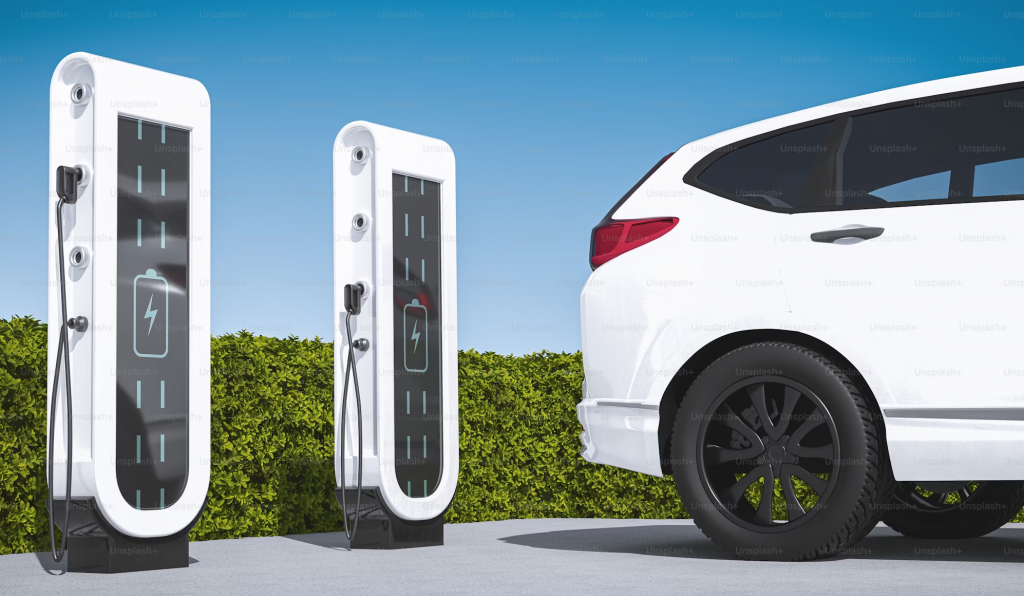
Electric vehicles (EVs) have come a long way since their inception, moving from niche products to mainstream alternatives to traditional internal combustion engine (ICE) vehicles. The global shift toward EVs is driven by multiple factors, including climate change, rising fuel prices, and the increasing demand for sustainable mobility solutions. As the world grapples with environmental concerns, technological advancements in electric mobility are setting the stage for a cleaner and more efficient future.
In this article, we will explore the global evolution of electric vehicle technology, examining the key trends and innovations that have shaped the EV market and the challenges that remain in creating a fully sustainable transportation ecosystem.
The Early Development of Electric Vehicles
The history of electric vehicles dates back to the early 19th century. The first electric car was created in the 1820s by Scottish inventor Robert Anderson. However, it was not until the late 1800s and early 1900s that electric vehicles gained more widespread attention. In 1835, the first electric vehicle prototype was built in London, while in 1879, the first electric vehicle made its way onto the streets of New York.
By the early 20th century, electric cars had gained popularity, particularly in urban areas. These vehicles were quiet, easy to operate, and did not require hand-cranking to start, unlike their gasoline counterparts. At the time, EVs were seen as more refined and user-friendly compared to the noisy, smelly gas-powered vehicles.

However, the advent of mass production by Henry Ford and the discovery of cheap gasoline in the 1920s led to a decline in electric vehicle popularity. The internal combustion engine (ICE) became the dominant form of propulsion for automobiles, and EVs virtually disappeared from the market for several decades.
The Rise of Hybrid and Electric Cars in the 21st Century
Fast forward to the late 20th century, when concerns about air pollution, climate change, and rising fuel prices began to make alternative energy sources more appealing. The modern electric vehicle era began in earnest in the 1990s, with the launch of the General Motors EV1 in 1996. This was one of the first mass-produced electric cars, though it was eventually discontinued due to high production costs and limited demand.
A major turning point came in 2008 with the introduction of the Tesla Roadster, a fully electric vehicle with a range of over 200 miles per charge—an achievement that had previously been thought impossible for EVs. Tesla’s success demonstrated that electric vehicles could not only be viable but also desirable, offering strong performance, efficiency, and range.
In the 2000s, hybrid vehicles like the Toyota Prius also gained traction. These vehicles used both gasoline engines and electric motors, reducing fuel consumption and lowering emissions. Hybrids bridged the gap between traditional ICE vehicles and fully electric cars, providing consumers with a sense of security regarding range while also helping to reduce fuel consumption and emissions.

Battery Technologies: The Heart of Electric Vehicles
One of the most significant breakthroughs in electric vehicle technology has been in the development of battery technology. Early electric vehicles were hampered by limited battery capacity, slow charging speeds, and high costs. The key to the widespread adoption of EVs lies in improving battery energy density, cost-efficiency, and charging time.
Lithium-ion (Li-ion) batteries have become the industry standard for EVs due to their high energy density, relatively low weight, and longer lifespan compared to older battery technologies like lead-acid or nickel-metal hydride (NiMH) batteries. Advances in battery chemistry, manufacturing processes, and economies of scale have led to a substantial reduction in battery prices over the past decade, making electric cars more affordable.
As a result, automakers like Tesla, Nissan, and BMW are now producing mass-market electric vehicles that offer ranges comparable to conventional vehicles. In addition to traditional lithium-ion batteries, new technologies, such as solid-state batteries, are being developed, promising even higher energy densities, faster charging times, and improved safety features.
Advancements in Electric Vehicle Powertrains
Electric vehicle powertrains have also evolved considerably over the years. Early EVs used simple direct current (DC) motors, but modern EVs employ advanced alternating current (AC) motors. AC motors are more efficient, offer smoother performance, and generate less heat compared to DC motors, making them more suitable for high-performance electric vehicles.
The development of regenerative braking technology has also helped increase the efficiency of electric vehicles. Regenerative braking systems capture and store energy during braking, which is then used to recharge the battery. This technology allows EVs to recapture energy that would otherwise be wasted, enhancing the overall driving range.
Innovations in motor controllers, inverter technology, and lightweight materials have contributed to the overall improvement in EV efficiency, performance, and cost.

Charging Infrastructure and Range Expansion
One of the key challenges in the widespread adoption of electric vehicles has been the development of a robust charging infrastructure. Early EVs suffered from “range anxiety,” the fear that the vehicle would run out of charge before reaching a charging station. This concern has been addressed through the expansion of charging networks and the development of fast-charging solutions.
Tesla’s Supercharger network, which allows for rapid charging of its vehicles, has become a major selling point for the company’s cars. Other automakers have followed suit, establishing partnerships with third-party charging networks like ChargePoint and Electrify America. Additionally, governments around the world are investing in public charging infrastructure, creating an ecosystem that makes it easier for consumers to own and operate electric vehicles.
In the future, wireless charging technology—where vehicles are charged through electromagnetic induction—may eliminate the need for physical charging plugs altogether, making EVs even more convenient.
Sustainability and Environmental Benefits
Electric vehicles offer numerous environmental advantages over traditional ICE vehicles. EVs produce zero tailpipe emissions, which can significantly reduce air pollution in cities and help mitigate the effects of climate change. Furthermore, as the grid becomes increasingly powered by renewable energy sources, the carbon footprint of electric vehicles will continue to decrease.
However, the environmental impact of EVs is not limited to their operation. Manufacturing batteries, especially lithium-ion batteries, involves the extraction of raw materials, which can have significant environmental and social impacts. Additionally, the recycling of batteries and EV components is still a work in progress. Nonetheless, the overall environmental benefits of EVs—particularly in terms of reduced greenhouse gas emissions—are undeniable.
Global Market Trends and Consumer Adoption
The global market for electric vehicles has grown exponentially over the past decade. As of 2023, EV sales accounted for over 10% of global car sales, and this percentage is expected to rise rapidly in the coming years. Key markets for EV adoption include China, Europe, and the United States.
China is the largest market for electric vehicles, with millions of EVs on the road. The Chinese government has heavily subsidized EV purchases and has made significant investments in charging infrastructure. Europe is also a major player in the EV market, with countries like Norway leading the way in EV adoption.
In the United States, Tesla’s success has been a major driver of EV growth, but automakers like General Motors, Ford, and Volkswagen are also investing heavily in electric mobility.
Government Policies and Incentives
Governments around the world have played a critical role in accelerating the adoption of electric vehicles. Policies such as tax credits, subsidies, and stricter emissions standards have incentivized consumers to choose EVs over traditional gasoline-powered vehicles. The European Union, for example, has committed to reducing greenhouse gas emissions by 55% by 2030, which includes promoting electric mobility.
The United States has also seen increased EV adoption due to federal and state-level incentives, including tax rebates and grants for EV infrastructure development. Additionally, California’s zero-emission vehicle (ZEV) mandate has spurred automakers to invest in EVs to meet regulatory requirements.

The Future of Electric Vehicle Technology
The future of electric vehicles looks bright, with ongoing innovations shaping the next generation of EVs. Solid-state batteries, which promise higher energy density and faster charging times, are one of the most exciting developments in the field. Autonomous driving technology, powered by AI and machine learning, is expected to become integrated into EVs, offering a new level of safety and convenience.
Furthermore, electric vehicles will increasingly become part of a connected ecosystem, with vehicles communicating with infrastructure, smart grids, and other vehicles to optimize energy use, reduce traffic congestion, and improve overall efficiency.
Conclusion
The global evolution of electric vehicle technology has been marked by significant advancements in battery technology, powertrains, charging infrastructure, and consumer adoption. While challenges remain, such as cost, battery production, and recycling, the future of EVs is undoubtedly promising. As governments, automakers, and consumers work together, the vision of a cleaner, greener transportation system powered by electric vehicles is becoming a reality.
With continued innovation and support, electric vehicles are poised to revolutionize the automotive industry, providing a sustainable alternative to traditional gasoline-powered vehicles and helping to address some of the most pressing environmental challenges of our time.






